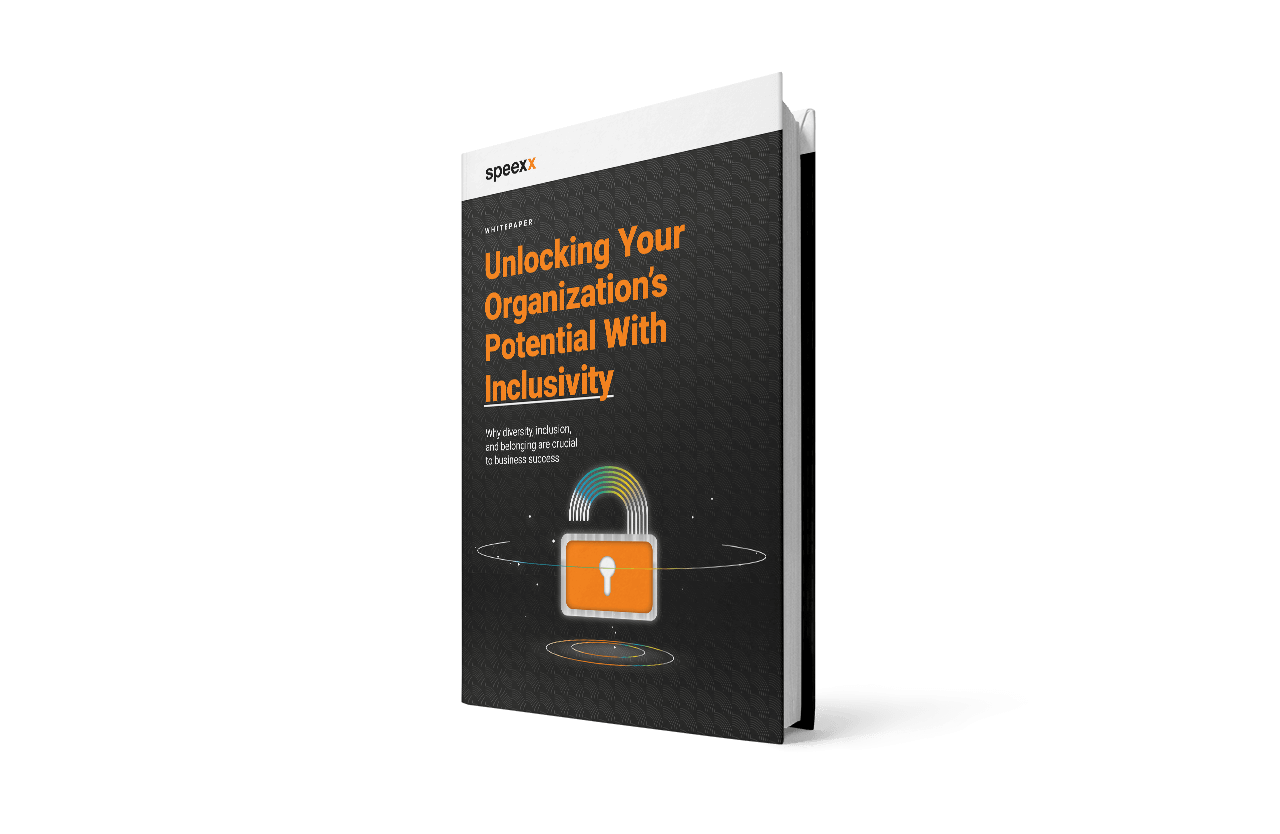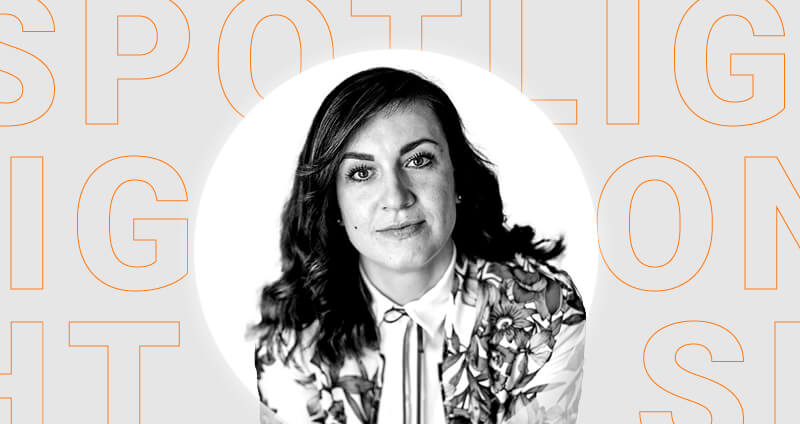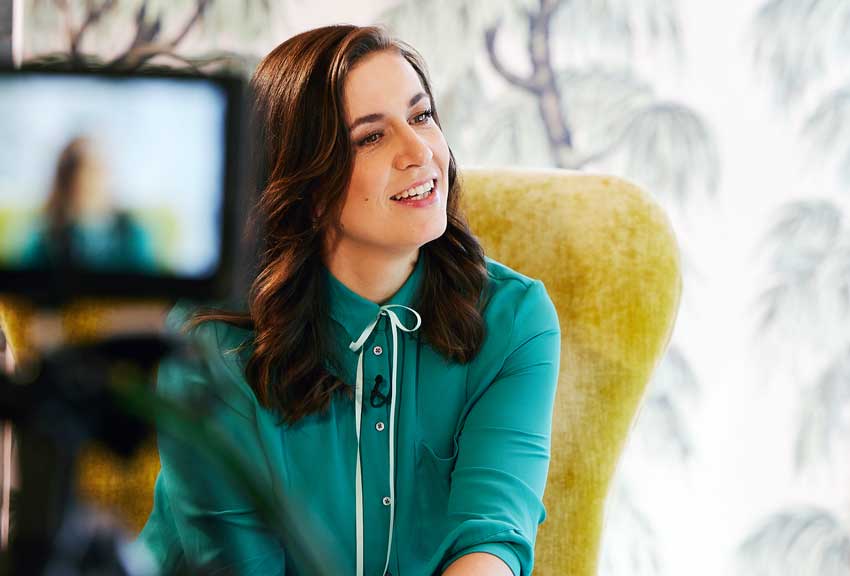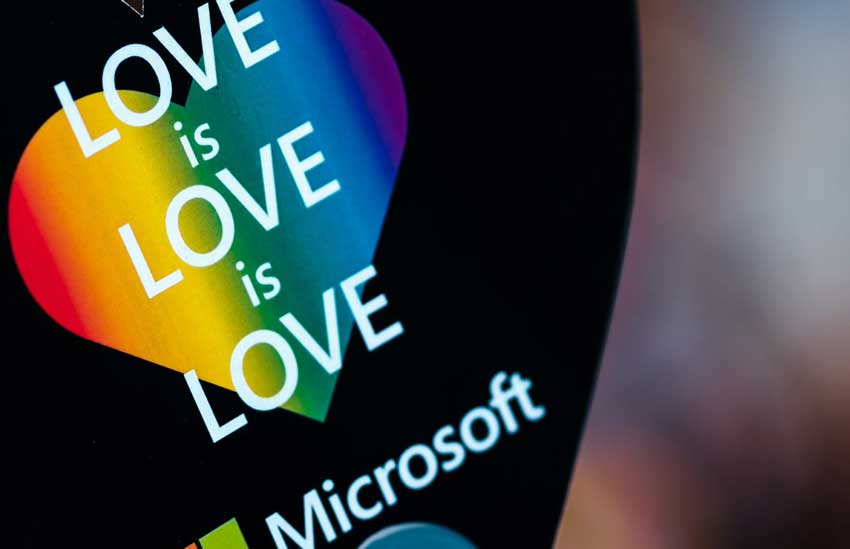Magdalena Rogl, Project Lead Diversity & Inclusion at Microsoft Germany, on her mission for a more open world of work.
For Magdalena Rogl, Project Lead Diversity & Inclusion at Microsoft Germany, the mission is clear: It’s all about empathy. More than anything else! In conversation with Speexx, the expert explains how her company approaches diversity and inclusion on a global level. All with a sense for detail and involving every single department to create a future-proof work culture and environment encompassing the full spectrum of individual needs.
About Magdalena Rogl
Magdalena Rogl is a prime example of the fact that a career is not required to follow a clearly delineated path to be considered ‘successful’ and ‘fulfilling’. As a trained nanny without a university entrance school diploma (German “Abitur”) and a single mother of two children, she realized in her mid-twenties that she needed a career change. “As a single nanny with two small children in Munich, you just can’t make ends meet.” With this in mind, her so-called ‘mini job’ in community management at Tomorrow Focus netting 400 euros per month soon turned into a full-time position and department lead. Her specialized focus in online and internal communications then opened a gateway into corporate communications. In 2016, Rogl moved to Microsoft Germany as Head of Digital Channels. In the fall of 2021, she drew on her personal involvement and commitment to join the HR department at Microsoft Germany in the role of Project Lead Diversity & Inclusion.
In October 2022, she will publish her first book with a focus on emotions in the workplace.
Inclusion – What is the true meaning?
Most people associate ‘inclusion’ with a form of considerateness, especially towards those individuals who would otherwise be facing disadvantages. But for Magdalena Rogl, inclusion is first and foremost based on empathy. For her, it’s about making an effort to understand how the world, how society, and how the workplace feels for someone who is different than oneself. “What’s it like for someone who obviously has a foreign last name?” It’s a question the expert can answer from personal experience, because prior to getting married she held a Croatian last name and the changed reactions when she was suddenly called Rogl were unmissable.
She now defines inclusion as “the attempt to empathize, to understand how other people feel and why some things might feel different or strange to them. Of course, you can say that considerateness is the next step, but I think that always sounds a bit patronizing and overbearing.”
Diversity through inclusion
Instead of two divergent subjects, Rogl sees diversity and inclusion as causally related: “They form a logical conclusion. Robert Franken, an active voice in the field of diversity and inclusion, once said quite fittingly: ‘Inclusion is the way and diversity is the goal.’ That sums it up brilliantly. It’s about creating a society or even a corporate culture in which no one feels excluded and in which all people can be who they are. That’s how diversity is created through inclusion – within the company and, ideally, in society as well.”
This sentiment mirrors the approach of her employer, Microsoft. Especially because the subject of diversity is one that is rapidly evolving. What a few years ago was understood primarily as a gender issue concerned with pronouns, inclusive language, and equal opportunities for all genders and ethnicities is now a much more multifaceted subject. Today, diversity is also concerned with themes such as neurodiversity and its impact on the needs of employees.

Find out more in our Whitepaper!
Microsoft’s inclusive mission
Microsoft’s statement of purpose reads: “Our mission is to empower every person and every organization on the planet to achieve more.” The company’s CEO, Satya Nadella, is committed to seeing this motto taken seriously and enacted in practice, while also closely scrutinizing what “every person” means. “Nadella himself has a very international background, which probably plays a major role in why this is so strongly put into action and rooted deeply within our company,” says Rogl.
In order to live up to its mission, Microsoft as a company places an equally strong focus on diversity, both externally and internally. Externally, the aim is to develop and launch products (hardware and software) that can reach all people and that can be used by everyone without barriers. Internally, Microsoft (like any other company aiming to bring accessible and inclusive products to market) requires diversity in its workforce in order to obtain the necessary input from as many different perspectives as possible to be able to develop these inclusive products in the first place.
Diversity & Inclusion: Full-time jobs, not side gigs
Many companies looking to do more in the areas of diversity and inclusion first decide to take the least costly route. In the first step, employees in the HR department are usually trained and educated to ensure more diversity and inclusion across the organization. But for the most part, these efforts happen on the side. Which can provide a starting point but will never fully suffice in the long run.
“From a project perspective, diversity and inclusion must not be treated as token tasks or something only done on the side. It’s crucial to assign key roles to stakeholders, functioning like satellites within the company and keeping an eye on the individual projects and tasks while maintaining overall direction of these efforts.” For this reason, Magdalena Rogl is both the main point of contact for all departments as well as the lead person responsible for the successful execution of individual projects. In every country where Microsoft has a subsidiary, someone in a similar role is responsible, organized locally as part of a global network.
What are the responsibilities of a Project Lead Diversity & Inclusion at Microsoft?
Very simply put, the aim of this position is to adapt corporate culture and working conditions to the real world – meaning actual people and their needs – instead of the other way around. “Basically, companies are also part of the ‘real world’, but in terms of culture, many companies and the working world in general can be very different from our society and the general culture we live in. That’s why it’s definitely part of my job to create a culture where everyone can feel comfortable.”
As a “fundamentally important” step towards reaching this goal, Rogl points out the communities that Microsoft lets its employees create, cultivate, and nurture. “The communities are very important for us, because on the one hand they create culture, and on the other hand they offer a space – a so-called safe space – in which people who feel they belong to a community can exchange ideas freely.”
Communities create inclusive communication among employees
LGBTQ+ is one example of such a community in which members can meet, conversate, and exchange ideas. “As an example, I personally am bisexual, but still, I don’t get associated with that community as a straight mother, married with two children. I’ve been quite active in the LGBTQ+ community since my first month at Microsoft and also helped organize Pride in my first year. Even though it’s not necessarily visible or understood by everyone, I’m still part of the community.”
The impetus for communication can also originate from within the communities, for example when problems are brought to Rogl’s attention that an individual person might not have felt comfortable addressing publicly. Thereby, important information and concerns find a way to reach her, allowing her to gain insights such as the fact that the fire doors are too heavy or impossible for someone in a wheelchair to open. Or that more gender-neutral restrooms are needed in the offices. “These are all things where the community is helping the company become inclusive to a point at which we can also enable diversity.”
Open communication promotes inclusion
The main factor at the heart of any strategy for greater inclusion? Open communication! After all, the challenge of assuring the entire workforce that they really can speak openly and without fear of consequences about their own needs and concerns is not be underestimated. As it turns out, it requires people to step beyond their comfort zone far more than expected.
“That’s why these communities are so important. They provide exactly this safe space, where it’s not about having to talk directly to a manager or HR, but to people who might have or have had similar experiences.” This creates a very natural environment for communication that helps employees feel understood.
The challenge of creating inclusion without exposing individuals
“We take great steps to ensure a discrete environment. In the community descriptions, we clearly state that they are open to all people who feel they belong to the community. But also open to everyone who wants to support a community. We always communicate this fact. So for example, we maintain a Family community that includes employees who don’t have children and we have a Women’s community that includes men.” The central focus lies with creating a sense of understanding and sharing to make things better for members of a community.
“Discretion also means that we are not going to make a big deal out of someone telling HR in confidence that they’re suffering from depression. But instead, we try to create a culture and awareness so that people can muster the courage to share with the team. I believe that this is really the key point: Talking more openly on a team level and among colleagues and, above all, paying attention to things that are invisible.”
Diversity within enterprises
In one way or another, diversity has become commonplace in almost every company. Especially as part of the mission statement. But how much is actually part of the mission and what is just an aspect of image strategy? “I think most companies understand at least superficially what diversity is, but many also just pretend to take it seriously. The business world is in a phase right now where the awareness of diversity exists, but it’s still predominantly used as a marketing tool by many companies.”
Meanwhile, diversity entails far more than questions of gender or ethnicity. “I also see a lot of companies really taking a serious look at the issue and seriously discussing and self-reflecting. This self-reflection is the most important first step for companies that really want to effect change in terms of diversity and inclusion. It’s painful sometimes to see that you’re really failing at some aspects.” Then again, it’s the only way to get a clear understanding of where and why change is needed and how to get there.
Neurodiversity in the workplace
One of the main hot button issues in discussions around HR, diversity, and inclusion right now is neurodiversity. What makes neurodiversity worthy of special attention, is that this type of diversity cannot be seen, at least at first glance. It’s virtually invisible. “Creating awareness around neurodiversity is the most important first step, alongside explaining what it even means and in what ways it can possibly manifest.” Everyone should know what ADHD is and understand what it means when people suffer from stimulus overload or a learning disability. What can be done to help these individuals function smoothly? One major takeaway is that there are no “one size fits all” approaches to be applied to neurodiversity. Simply because the needs and preconditions are extremely different from person to person.
“The goal is to make people feel safe enough to be open about what changes are important to them.” For example, if a person on the team has ADHD and therefore faces major issues with multitasking, they should be able to simply ask to be excluded from messaging on Teams if their status is set to ‘busy’. “As a company, of course, we also want to offer support to make the entire team better, for instance by coaching employees with ADHD on how to get better at being organized.”

Inclusion in staff training
Inclusion also plays a major role when it comes to education and training. Mainly to provide everyone with a chance to develop themselves and their talents. That’s exactly where Magdalena Rogl sees a problem that starts as early as the school years. “The most challenging hurdle is that so far, our education systems have not been inclusive at all. If you look at kindergartens or schools, their respective resources are rather small. That makes things very difficult. And if you look at the statistics, it becomes rather obvious and clear that people are subject to ‘filtering’ very early on. It’s very damaging that many people cannot even make it to the job market as a result.”
This fact becomes painstakingly clear considering the opportunities available for people with disabilities. “In routine practice, they are very often ushered directly in the direction of sheltered workshops for the disabled. In Germany, companies still like to take public credit for work with these workshops for people with disabilities. When in reality, in many cases this amounts to total exploitation.” Inclusive training and education opportunities on a company level are still receiving little attention. But they are bound to become increasingly important in the inclusive and diverse working world of the future.
Inclusive learning = learning from one another?
“For this reason, conversations about adult education and continuing education need to be as inclusive as possible. Mainly to ensure that people who already had access to more opportunities and options for advancement are not favored again. But that on the contrary, we pay particular attention to creating opportunities that apply to all people. It’s also key to foster more empathy for each other. And to learn and educate ourselves alongside diverse people around us, and most importantly, to learn from one another.”
At Microsoft, once per month employees attend a Learning Day, solely dedicated to learning and continuing education. The events feature interactive learning opportunities, for instance in the format of community sessions. These types of initiatives offer unique opportunities to listen and learn from others. On the same note, an internal (digital) learning platform that provides training, videos or certifications can help to make continuing education accessible and attractive to all employees.
The inclusive and diverse workplace of the future
In response to the events and developments of the past few years, most companies feel compelled to rethink work routines and try out new, modern approaches. For Magdalena Rogl, the workplace of the future will be “very diverse, because we will be active simultaneously in many different workplaces or work situations. The pandemic has also brought home the fact that work can happen in many different ways, formats, and locations. This trend is only accelerating and will inevitably lead to more inclusion, because people will no longer be mandated to be physically present at the office every day. Diversity and inclusion will manifest quite organically in the workplace or in the way people work together. I’m really hopeful and optimistic that a job like mine will become obsolete in the not-so-distant future.”
Looking ahead, overarching questions of corporate culture will remain important, but diversity and inclusion will increasingly be viewed as self-explanatory. “Looking at the younger generations, you already see that it’s taken for granted. In closing, here’s an interesting statistic: 72% of Millennials would be willing to change companies if the new one was more inclusive. That’s indicative of a positive development. And I think that by the time this generation eventually takes over the working world, things will already look strikingly different.”


